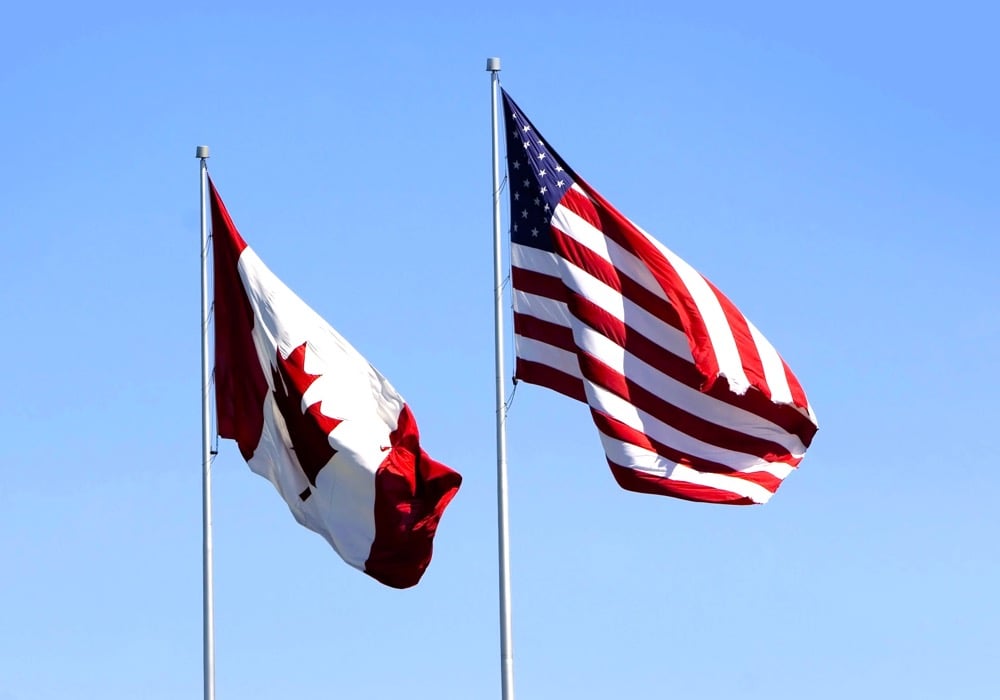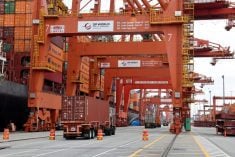With $12 canola and $8 wheat, farmers have ripped up thousands of acres of alfalfa and grassland in Western Canada over the last few years.
While it’s difficult to fight basic economics, a new hay insurance program might help counter that trend in Manitoba, says a beef industry leader.
In October, the Manitoba and federal governments unveiled a new hay insurance program for livestock and forage producers.
Starting next year, farmers can buy two forms of hay insurance.
One, called Select Hay Insurance, offers coverage for five types of hay: alfalfa, alfalfa-grass, tame grasses, sweet clover and coarse hay, where each hay category is insured separately. It also offers quality guarantees because growers can buy coverage for relative feed value.
Read Also

Canadian trade data delayed by U.S. government shutdown
Canadian international trade data for September will be delayed indefinitely due to the ongoing partial shutdown of the United States government, Statistics Canada said Friday, Oct. 24.
The other program, known as Basic Hay Insurance, is a lower cost option that covers all acres of tame hay in an operation.
Manitoba Beef Producers president Trevor Atchison said the insurance options and the level of coverage are comparable to grain and oilseed crops.
“It puts us on a level playing field, which hopefully will… slow this transition of forage land being broken up into annual crop,” said Atchison, who farms near Pipestone.
“If I was a producer who grows high quality dairy hay, I would be looking at that select coverage. Without a doubt…. You’d want to put as much coverage as you can get on that hay land, because you’re trying to generate similar productivity as (if) it was an annual crop.”
Atchison said the new program is far superior to existing tame hay insurance in Manitoba. It offers more options and higher levels of coverage.
Lorne Rossnagel, a cattle and forage producer near Plumas, agreed, noting the program provides coverage according to hay yields on a particular farm rather than on regional yields.
“You can establish your own production levels. I think that’s a good thing because soil types vary, production practice varies and fertilization varies.”
Rossnagel said the old hay insurance program was too expensive and didn’t cover quality shortfalls.
“On our operation, when we costed it out, we were looking at a pretty significant premium,” he said.
“Usually, in our situation, the problem is more quality rather than volume. The other system didn’t take that factor into account.”
Under the new model, producers will cover 40 percent of the insurance premiums, the federal government 36 percent and the Manitoba government 24 percent.
Costs could be similar to the old hay insurance system, depending on the level of insurance, Atchison said.
“The premium may not necessarily be cheaper than it used to be, but you can get better and more specific coverage that you couldn’t get before,” he said.
“You can get 70 to 80 per cent coverage, or 50 (percent) or basic coverage. You can tailor to how much you want to spend as a premium and what kind of returns you want out of it.”
In a news release announcing the hay insurance, the provincial government said the new program should encourage more producers to “protect their feed source, reducing the need for future assistance programs.”
In other words, don’t expect ad hoc payments if there is a flood or a drought.
“The government has told us that’s pretty much the way it’s going to go,” Rossnagel said.
“Whether it’s field crops or (forage), they’re trying to get away from that ad hoc business and make sure everybody has their insurance to take care of that kind of situation.”
Atchison said it will take time for producers to become familiar with the program, but he hopes they will take advantage of it.
Rossnagel, who typically puts up extra hay as insurance against future losses, said he is considering the new program.
“We tend to run sort of our own insurance program. In years where we have a really good hay crop, we try not to sell too much of it,” he said.
“(But) I think we’ll probably do some insurance coverage.”















